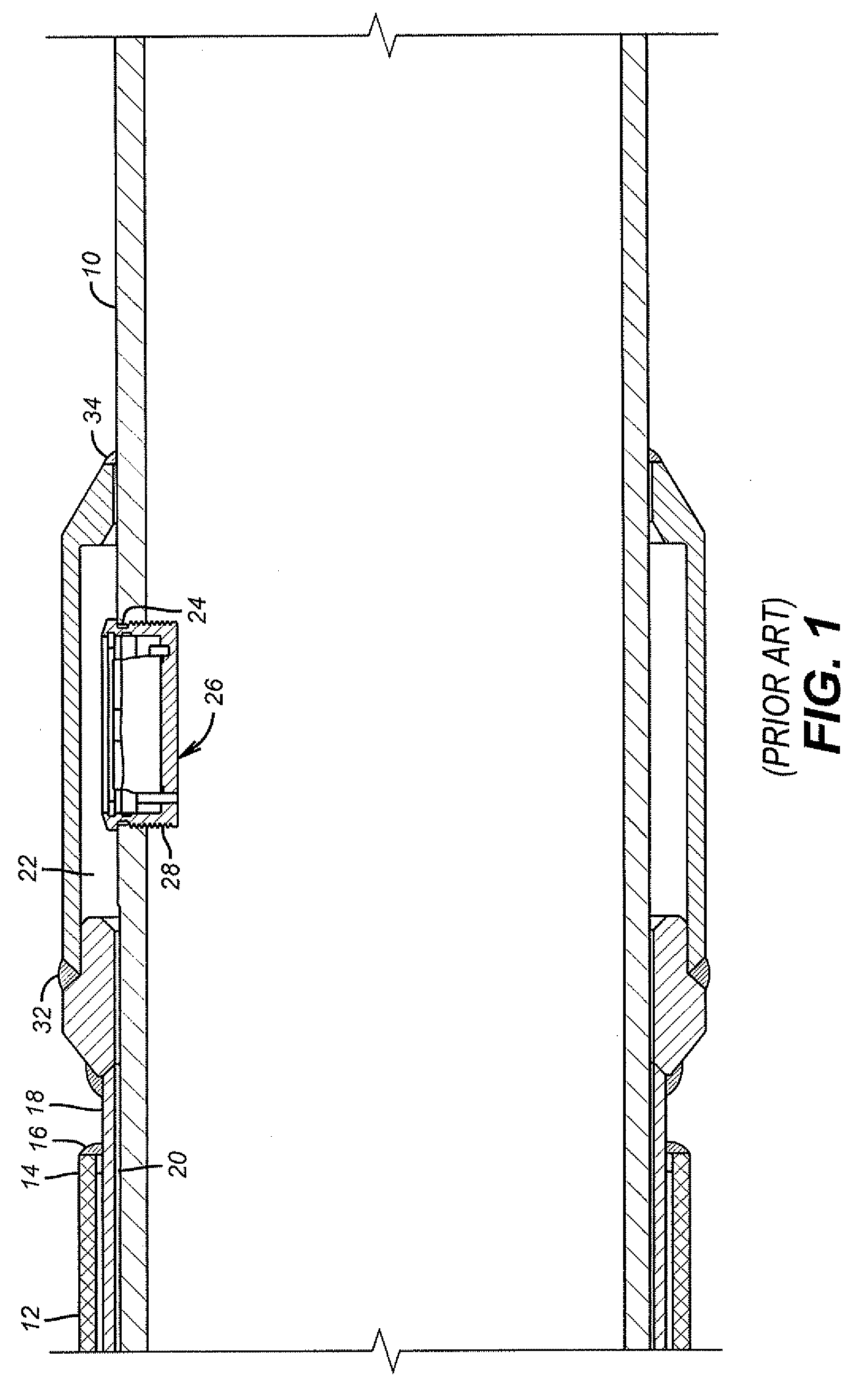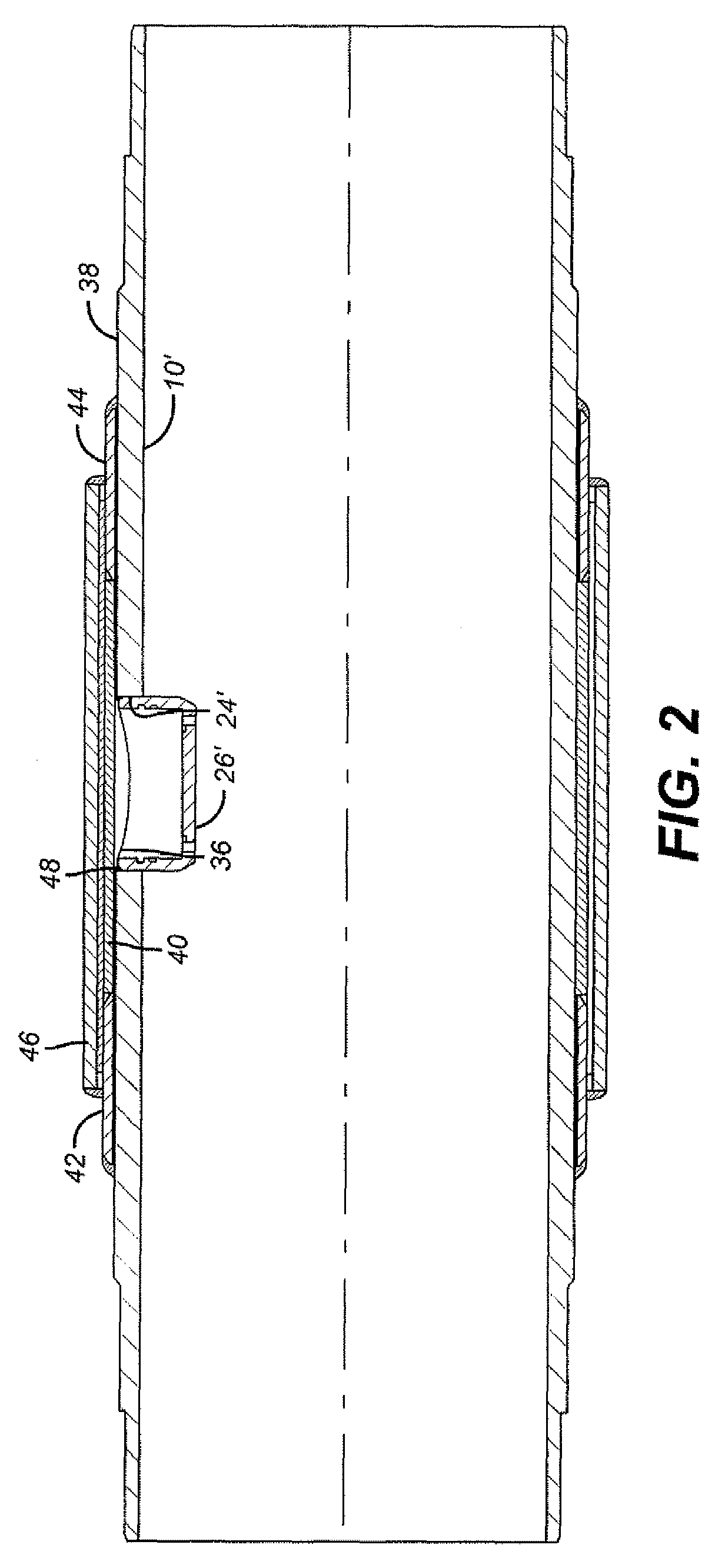Restrictor valve mounting for downhole screens
a technology of restrictor valve and downhole screen, which is applied in the direction of drinking water installation, borehole/well accessories, construction, etc., can solve the problems of leakage potential, inability to fully resolve thread sealant, and inability to welding the valve into the hole in the base pipe, so as to reduce assembly time and cost
- Summary
- Abstract
- Description
- Claims
- Application Information
AI Technical Summary
Benefits of technology
Problems solved by technology
Method used
Image
Examples
Embodiment Construction
[0017]FIG. 1 illustrates a base pipe 10 with a cylindrically shaped screen 12 mounted over it and sealed at both ends although only one end is shown. At end 14 there is a continuous weld 16 to a ring 18 which includes a plurality of standoffs to define axially extending passages 20 that lead to annularly shaped chamber 22. One or more openings 24 are first placed in the base pipe 10 wall and threaded to accept valve assembly 26 at its thread 28. After the screen 12 is attached, as described, and the openings 24 created and tapped, the valve assembly 26 is screwed in and the sleeve 30 is put into position and continuously welded at top 32 and bottom 34. The valve illustrated in FIG. 1 has the capability to detect gas flow apart from liquid flow and close, or restrict, when gas flow is detected. Its internal workings are not a part of the present invention. This assembly technique is time consuming and expensive.
[0018]FIG. 2 shows a way to assemble the components more quickly and econ...
PUM
 Login to View More
Login to View More Abstract
Description
Claims
Application Information
 Login to View More
Login to View More - R&D
- Intellectual Property
- Life Sciences
- Materials
- Tech Scout
- Unparalleled Data Quality
- Higher Quality Content
- 60% Fewer Hallucinations
Browse by: Latest US Patents, China's latest patents, Technical Efficacy Thesaurus, Application Domain, Technology Topic, Popular Technical Reports.
© 2025 PatSnap. All rights reserved.Legal|Privacy policy|Modern Slavery Act Transparency Statement|Sitemap|About US| Contact US: help@patsnap.com



